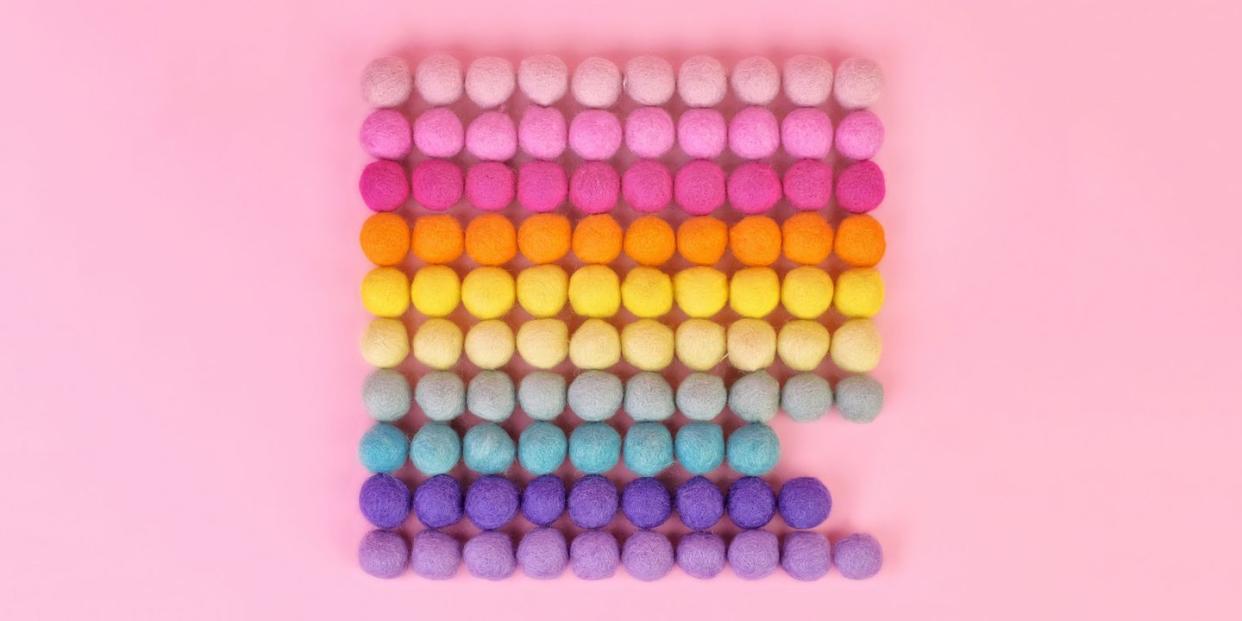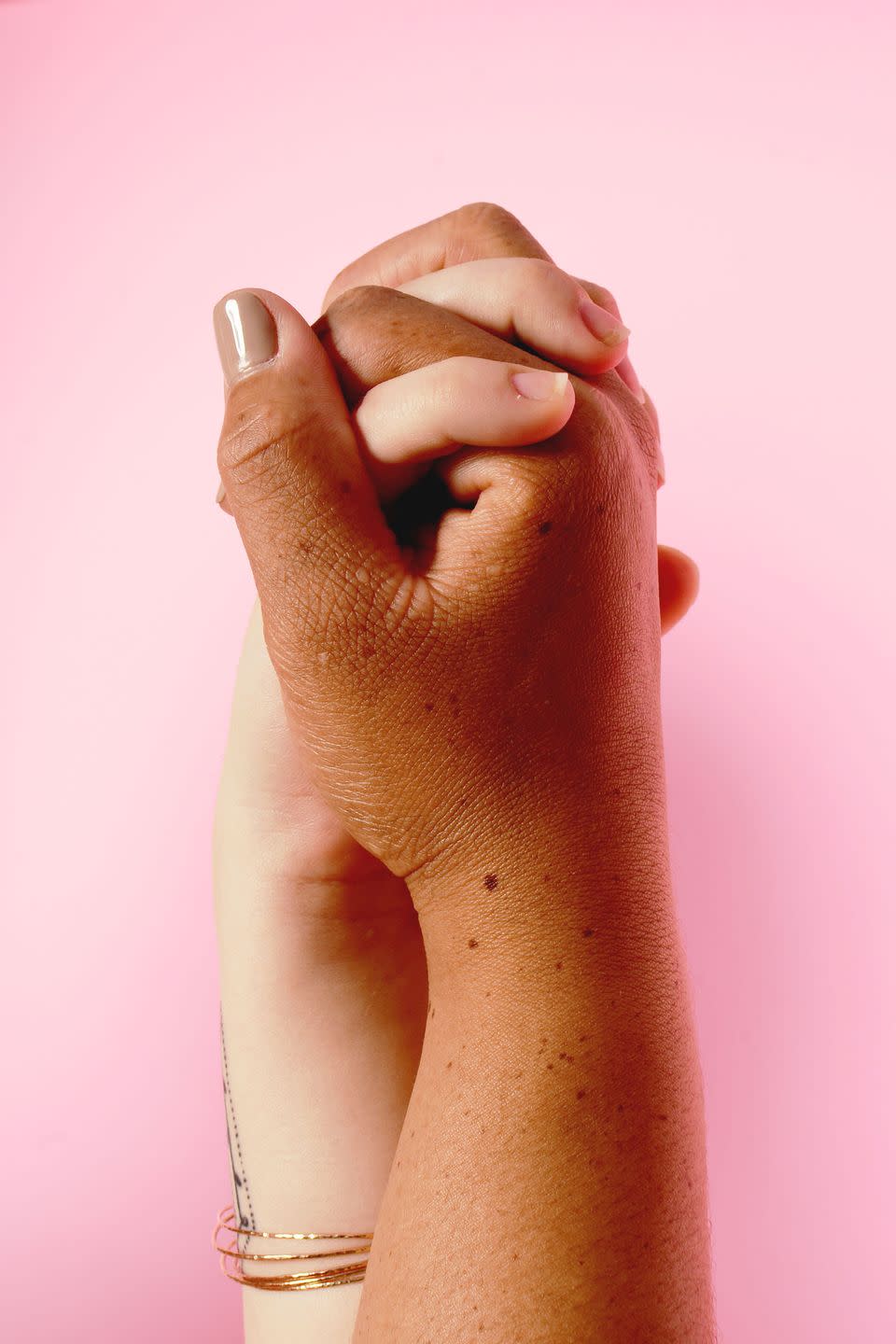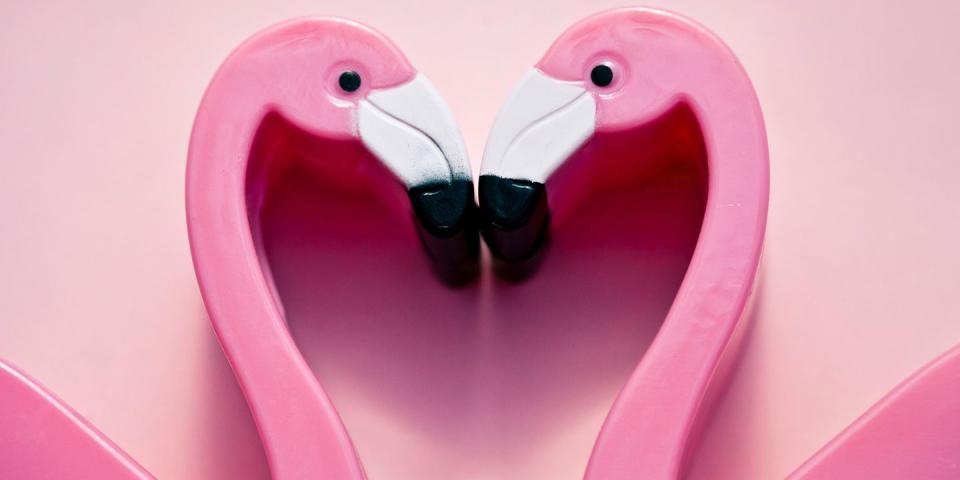This is what it means to be skoliosexual

Whether you've heard the word skoliosexual, it's an important LGBTQ+ term you'll want to understand. Like pansexual and queer, skoliosexual is a word you're likely to be hearing a lot more of. In short, skoliosexuality is a way of recognising the beauty beyond binary definitions of “man” and “woman” in a world that says that you can only ever be either/or.
Like many queer people, my experience of coming out hasn’t been a straightforward, one-time thing. After first coming out as bisexual, then as a lesbian, I was still struggling to find a term that expressed my experience — particularly as I realised that I was non-binary (I don’t feel like a woman or a man, but something in-between) with a preference for “they” pronouns.
Simultaneously, I was finding myself increasingly drawn towards other genderqueer people — perhaps because they were less inclined to assume I was a cis [non-trans] woman. By speaking with some of the people I was dating, I was introduced to the term skoliosexual. Since then, it’s a label I’ve used to explain that my romantic interest in other non-binary people, although it’s still not super widely used in the queer community.

What does it mean to be skoliosexual?
Skoliosexuality is a term that describes individuals who are primarily attracted to intersex, genderqueer and non-binary individuals, as opposed to those who define as either men or women. Attraction to trans people can also be encompassed within skoliosexuality given that they can also be non-binary or genderqueer. The term predominantly emerged from within queer communities on sites like Tumblr, meaning that definitions can vary.
For example, some individuals use skoliosexual interchangeably with other words, such as “ceterosexual” and “transromantic”, that indicate attraction to trans people. However, skoliosexuality places the emphasis on attraction to individuals who do not identify with binary definitions of gender. What makes it different to more commonly used terms such bisexual or pansexual is that it can indicate a lack of attraction to cisgender [non-trans] people, whereas these other orientations might be more inclusive of cisgender people.
Skoliosexuality is a way of recognising the beauty beyond binary definitions of “man” and “woman” in a world that says that you can only ever be either/or.
Who can be skoliosexual?
Anyone can be skoliosexual regardless of their own gender, though people that parrot out the old “there’s only two genders” line might not really be suited to skoliosexual dating.
If you're wondering, "Am I skoliosexual?"
You’ve surely found non-binary and genderqueer celebrities like Amandla Stenberg, Sam Smith, Ezra Miller, Indya Moore or Asia Kate Dillon attractive at some point but that doesn’t automatically make you skoliosexual rather than pansexual or bisexual. However, if you’re primarily attracted to non-binary and gender non-conforming celebrities such as the above, and you more often than not find yourself swiping right for they/them pronouns, you may well be skoliosexual – congrats!

What’s it like being skoliosexual?
For me, while I am still often attracted to cis women, I identify with the term skoliosexual because it’s with other non-binary people that I feel like my gender is truly validated. Why? I know the other person “gets” it and I don’t have to deal with the constant erasure of being referred to by “she/her” pronouns.
For some cis people, dating beyond the gender binary can also provide relief from traditional gendered relationship scripts. This, at least, is the experience of Anne*, a 24-year-old barista from Bristol. “Although I currently identify as a cis woman, I don’t feel strongly attached to my assigned gender,” she says. “Being with a gender fluid or non-binary person can feel a bit like coming home for me. They make me feel like I no longer have to perform binary gender roles.”
June*, a 23-year-old living in Edinburgh and currently working as a project manager, on the other hand, primarily defines as skoliosexual because non-binary people (if I say so myself), are really hot. “I’ve always found androgyny attractive – in both men and women – and progressively ended up seeing mostly non-binary and gender-non-conforming people.” However, she also feels like her preference for genderqueer people could be a reflection of her own disregard for the normative “rules” of gender. “Over the years I’ve come to see my gender in a different way, so [feel] like maybe my skoliosexual leanings are rooted in my own gender-fluidity.”
Is skoliosexuality problematic?
There’s some commentary online that skoliosexuality could be a form of fetishisation of gender non-conforming, non-binary and gender queer people. For some people the way they approach skoliosexuality could be, particularly if they aren’t prepared to do the work to understand their partner’s gender experience or if they think being non-binary is a “cool trend” they want to gain proximity to.
Therefore, approaching skoliosexuality with respect, particularly if you are cisgender yourself, is of the upmost importance. Not all non-binary experiences are the same and we don’t all look the same (we don’t owe anyone androgyny!) Make sure you don’t force your partner to answer questions about the non-binary community that you could easily research yourself. And as the bare minimum, make an effort to respect their pronouns no matter where you are or who you are talking to.
*Names have been changed
You Might Also Like

